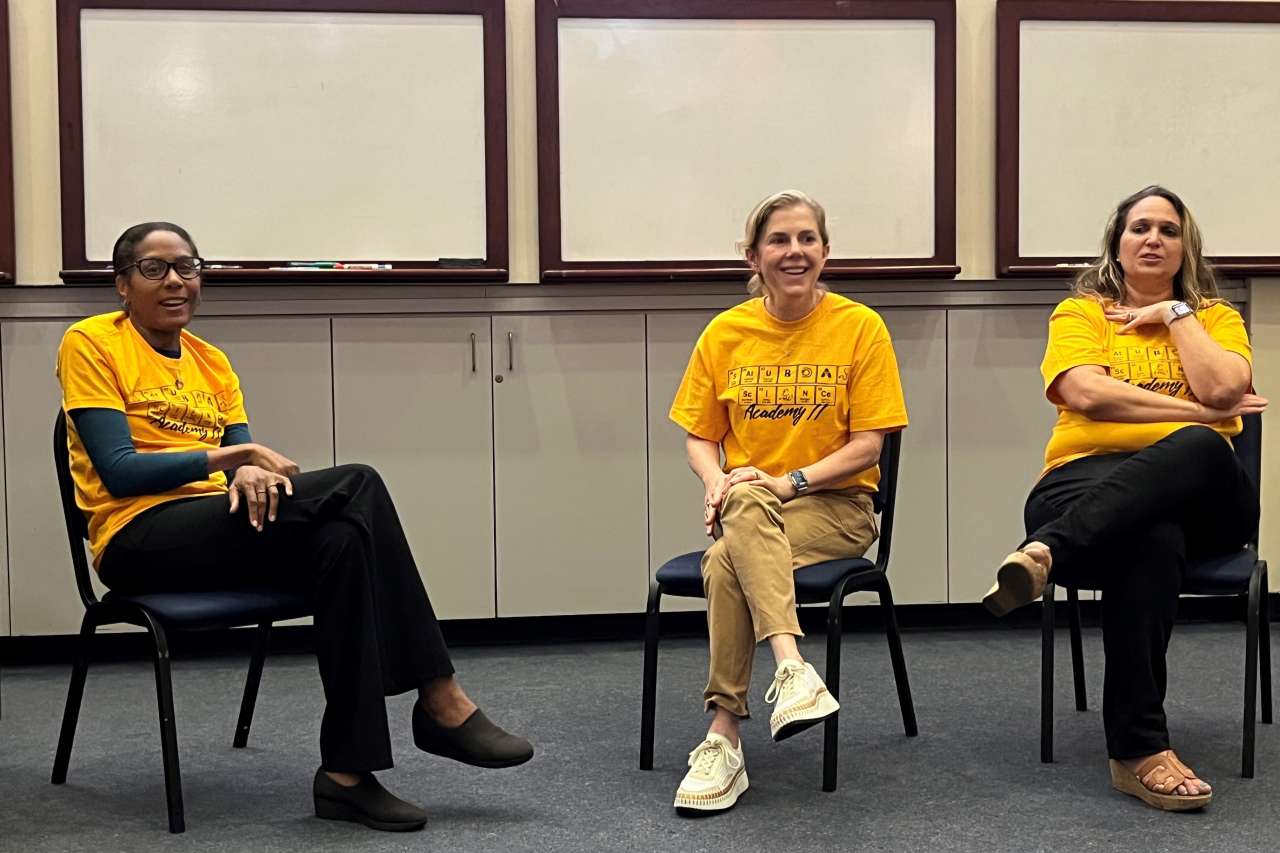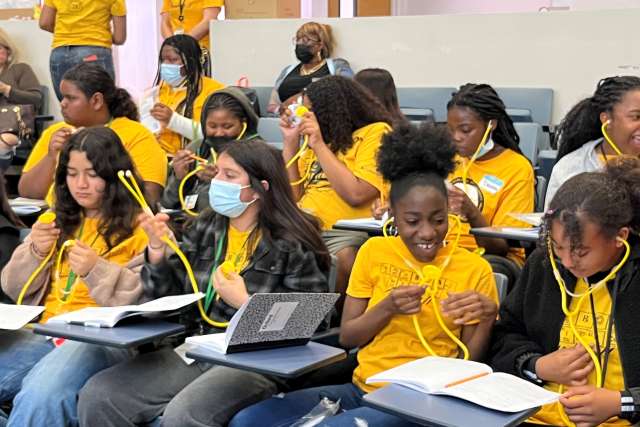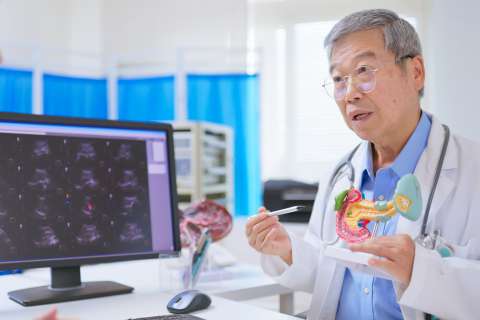“Are you only diagnosed with coronary artery disease if you have a heart attack?”
“When does a person need a heart transplant?”
“What’s the difference between a stroke and a heart attack?”
These are some of the questions middle-school students participating in the Saturday Science Academy at Charles Drew University in Los Angeles asked April 29 of three visiting cardiologists from UCLA Health.
“They had so many great questions,” said Karol Watson, MD, PhD, director of the UCLA Health Women’s Cardiovascular Center and the UCLA Fellowship Program in Cardiovascular Diseases. “I see future doctors here.”
Dr. Watson, along with Tamara Horwich, MD, and Marcella Calfon Press, MD, PhD — all professors of cardiology at the David Geffen School of Medicine at UCLA — spent 90 minutes talking with the sixth-, seventh- and eighth-graders about the anatomy of the heart, what causes heart disease and how to keep the heart healthy.
The Early Cardiovascular Health Outreach event was organized by recent UCLA and Charles Drew graduate Kimberly Uehisa, MS, to teach young people about heart health and encourage them to consider medical careers. Uehisa won a grant to conduct the program on Global Youth Service Day.
A volunteer with UCLA Health and aspiring medical student, Uehisa said she was inspired to create the program because she was unexpectedly diagnosed with high blood pressure as a teenager.
“This was very surprising and scary to me, because I didn’t know what high blood pressure was,” she told the students gathered in one of Charles Drew University’s classrooms. “And now, being on high blood pressure medication and learning more about what high blood pressure is and the importance of having a healthy heart, I made it part of my mission to help raise awareness of the importance of cardiovascular health.”

Uehisa explained the anatomy of the heart by likening its four chambers to a two-story house. The students learned about how the heart oxygenates blood before circulating it throughout the body. They discussed the difference between veins and arteries and learned how to take their pulse by feeling the carotid artery.
Each student was given a plastic stethoscope to listen to their own heartbeat. Some parents in the audience took one, too, pressing its bell to their chest.
Throughout the presentation, the students’ hands shot up to ask questions.
“What does it mean if your heart is beating really fast?”
“Does caffeine affect the heart?”
“If I have a heart attack, will I need surgery?”
The youngsters talked about NFL player Damar Hamlin, who suffered cardiac arrest during a Monday Night Football game earlier this year, and the importance of performing CPR in such instances.
They also learned simple ways to help keep their heart healthy: staying active, eating healthy, getting enough sleep and keeping stress levels low.
“Our motto for our teen heart health program is: Move your feet, watch what you eat and stay upbeat,” Dr. Watson said.
Sixth-grader Esmeralda Rosas said she was grateful to learn about heart disease and how to prevent it, “especially as we’re young, since it develops over time.”
She plans to start eating better and exercising more, she said, and intends to spread the word to her family about staying heart healthy.
“Just to be aware,” she said. “I have a lot of cousins and siblings who like to eat out a lot, so I’ll definitely warn them about diseases of the heart.”
Another sixth-grader, Michaela Danson — who asked several questions during the program — kept her stethoscope around her neck as the event wrapped up.
“I want to be a pediatrician and a cardiologist,” she said.
“I think it’s in your future,” Dr. Watson said. “You guys are really amazing.”






